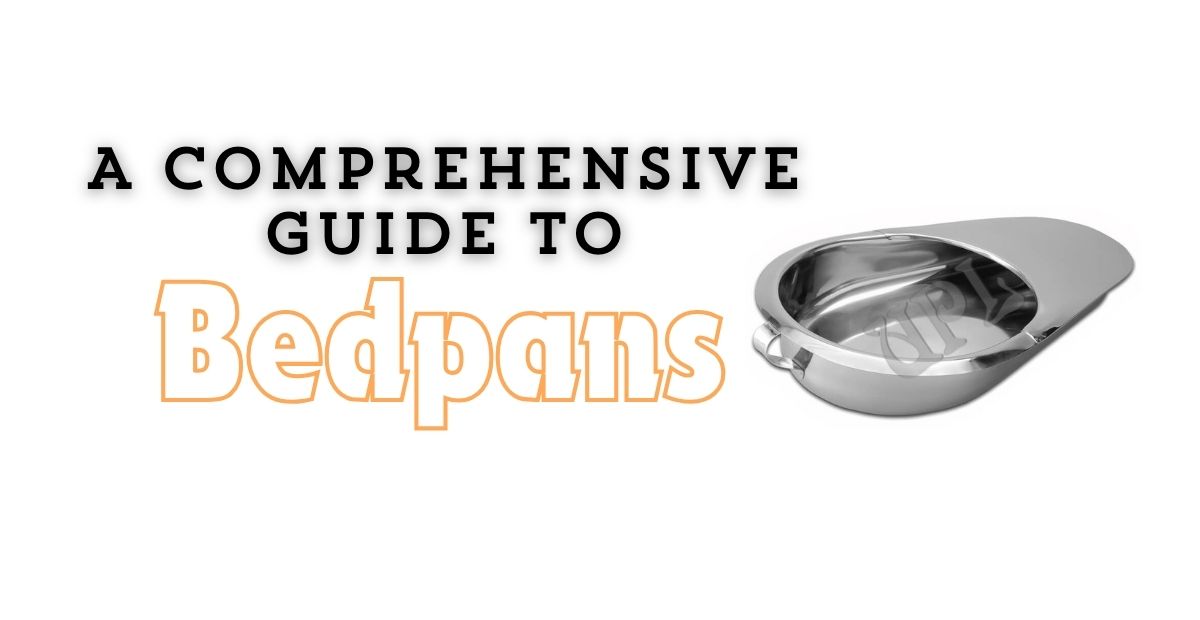When it comes to providing quality care for bedridden patients or individuals with limited mobility, one unassuming yet crucial tool often goes unnoticed – the humble bedpan. While it may not be the most glamorous aspect of healthcare, understanding the different types, uses, and benefits of bedpans is essential for ensuring comfort, hygiene, and dignity for those in need.
We’ll delve into the world of bedpans in this extensive guide, highlighting their significance and giving you the information you need to choose and utilise them wisely.
Types of Bedpans: Finding the Right Fit
Bedpans come in various shapes, sizes, and materials, each designed to cater to specific needs and preferences. Here are some of the most common types:
- Fracture Bedpans: Designed for patients recovering from fractures or injuries that limit leg movement, these compact pans allow for easy positioning and removal without causing discomfort.
- Bariatric Bedpans: As the name suggests, bariatric bedpans are larger in size and accommodate the needs of plus-size patients, ensuring a secure and comfortable fit.
- Reusable Bedpans: Crafted from durable materials like plastic or stainless steel, reusable bedpans offer a cost-effective and eco-friendly solution. However, they require thorough cleaning and disinfection after each use.
- Disposable Bedpans: For those prioritizing convenience and hygiene, disposable bedpans made from lightweight cardboard or plastic provide a single-use option, eliminating the need for cleaning and reducing the risk of cross-contamination.
In addition to these primary types, specialty bedpans are available, such as those with integrated grips or higher sides for increased stability and security, that are intended for certain medical issues or mobility issues.
Practical Uses and Benefits
While the primary function of a bedpan is to assist with toileting needs for those confined to bed, their benefits extend far beyond that. Here are some practical uses and advantages of incorporating bedpans into care routines:
- Promoting Comfort and Dignity: Bedpans maintain a person’s feeling of dignity and independence by enabling them to take care of their bathroom needs without the inconvenience or possible shame of using a regular toilet.
- Preventing Skin Breakdown: Bedpans reduce the likelihood of subsequent difficulties for patients who are at risk of developing pressure sores or skin breakdown by removing the requirement for extended sitting or friction during transfers.
- Facilitating Mobility: Bedpans may be a lifeline for those recuperating from surgery or with restricted movement, allowing them to cater to their requirements without needless effort or risk of falls or injury.
- Improving Caregiver Safety: Bedpans assist lower the risk of musculoskeletal injuries for carers by reducing the need for unnecessary patient handling and transfers, hence fostering a safer working environment.
Choosing the Right Bedpan
It’s important to take into account the patient’s size, degree of movement, and any particular medical needs or conditions while choosing a bedpan. Speaking with carers or medical experts might yield insightful advice according to the requirements of the patient.
Additionally, factors like the material’s durability, ease of cleaning, and odor resistance should be taken into account to ensure a hygienic and comfortable experience for both the patient and caregiver.
Bedpans are essential for ensuring comfort, dignity, and general well-being for those who need assistance with basic toileting needs, even though they are frequently disregarded. Knowing the many kinds, useful applications, and advantages will help you make decisions that will guarantee the best possible care for you or your loved ones.
Recall that the correct bedpan may significantly improve the quality of life for individuals requiring prolonged bed rest or mobility issues, as well as the caring experience.






